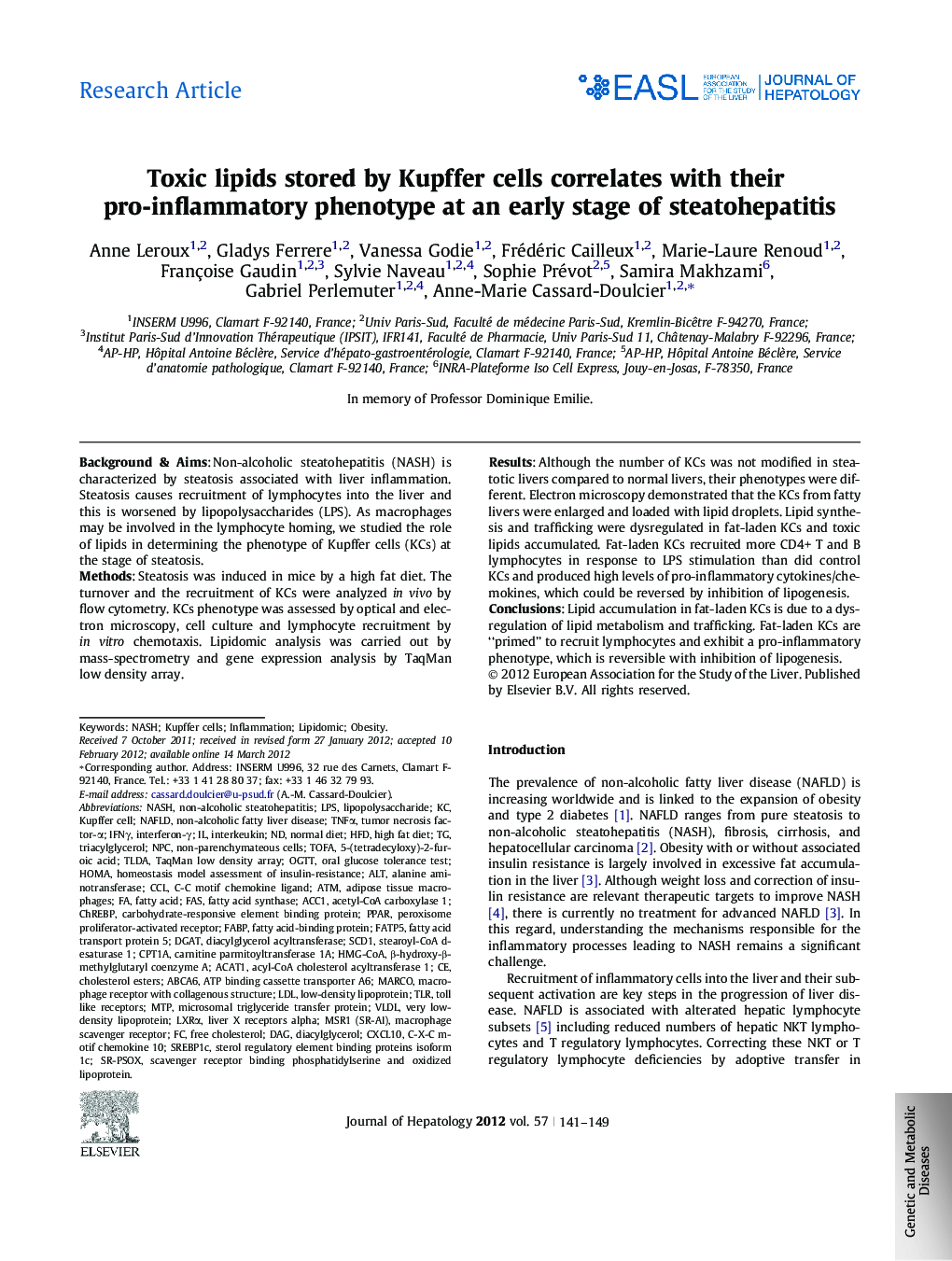| Article ID | Journal | Published Year | Pages | File Type |
|---|---|---|---|---|
| 6106814 | Journal of Hepatology | 2012 | 9 Pages |
Background & AimsNon-alcoholic steatohepatitis (NASH) is characterized by steatosis associated with liver inflammation. Steatosis causes recruitment of lymphocytes into the liver and this is worsened by lipopolysaccharides (LPS). As macrophages may be involved in the lymphocyte homing, we studied the role of lipids in determining the phenotype of Kupffer cells (KCs) at the stage of steatosis.MethodsSteatosis was induced in mice by a high fat diet. The turnover and the recruitment of KCs were analyzed in vivo by flow cytometry. KCs phenotype was assessed by optical and electron microscopy, cell culture and lymphocyte recruitment by in vitro chemotaxis. Lipidomic analysis was carried out by mass-spectrometry and gene expression analysis by TaqMan low density array.ResultsAlthough the number of KCs was not modified in steatotic livers compared to normal livers, their phenotypes were different. Electron microscopy demonstrated that the KCs from fatty livers were enlarged and loaded with lipid droplets. Lipid synthesis and trafficking were dysregulated in fat-laden KCs and toxic lipids accumulated. Fat-laden KCs recruited more CD4+ T and B lymphocytes in response to LPS stimulation than did control KCs and produced high levels of pro-inflammatory cytokines/chemokines, which could be reversed by inhibition of lipogenesis.ConclusionsLipid accumulation in fat-laden KCs is due to a dysregulation of lipid metabolism and trafficking. Fat-laden KCs are “primed” to recruit lymphocytes and exhibit a pro-inflammatory phenotype, which is reversible with inhibition of lipogenesis.
